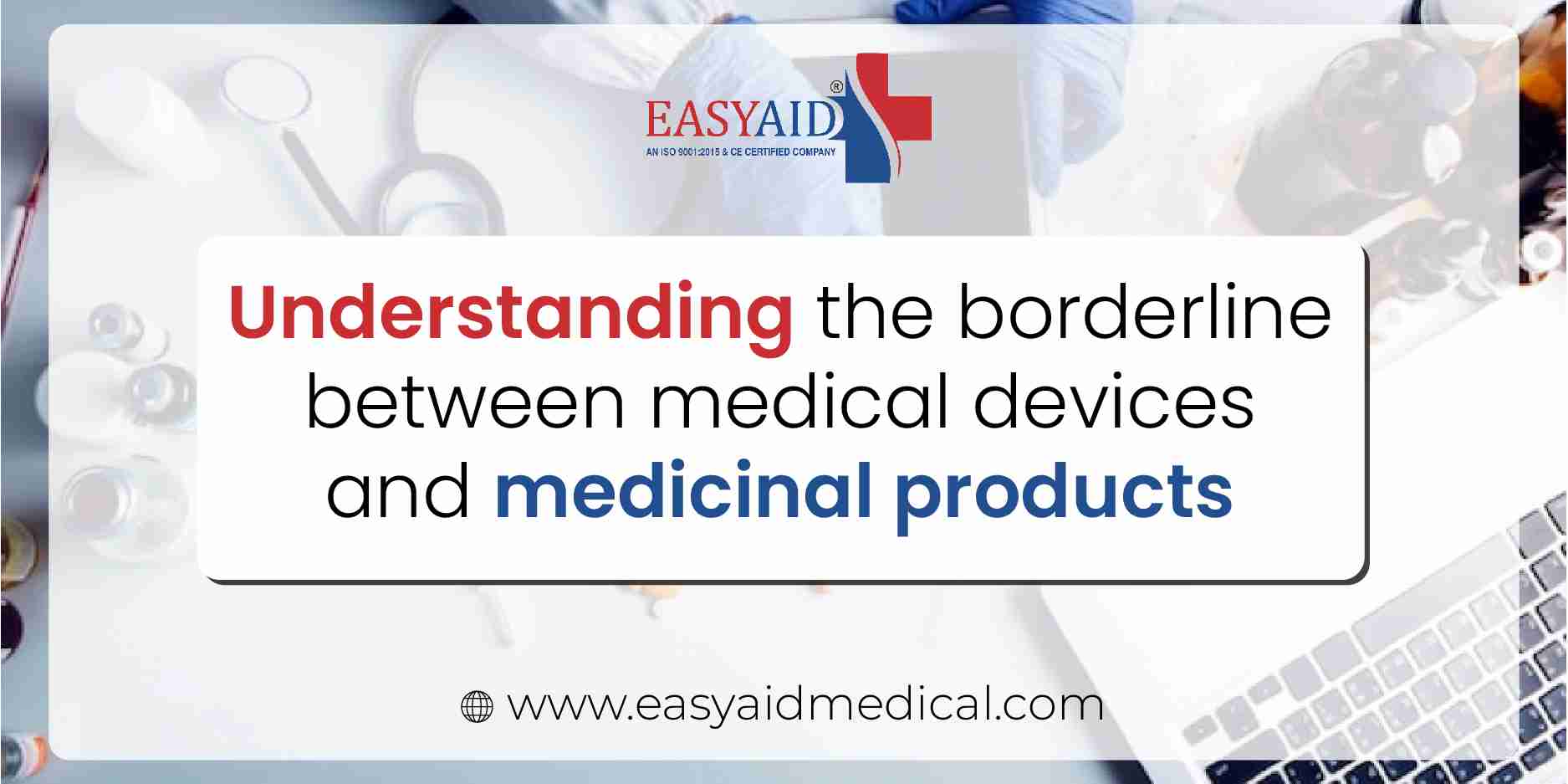
In the healthcare industry, the difference between medical devices and medicinal products plays a significant role in ensuring healthcare discoveries’ safety, efficiency, and regulation. Both are essential in diagnosing, monitoring, preventing, and treating health issues. However, understanding their differences is critical for regulatory compliance, product development and patient safety.
This article explains well about the nuances of medical devices and medicinal health care products. Explore their differences and similarities, and examine the regulatory framework governing the classification and market authorization.

Understanding the borderline between medical devices and medicinal products
Medical Devices: Encourage Healthcare Services
Definition – Medical devices, instruments, apparatuses, implants, software, etc., proposed for diagnosis, prevention, monitoring, and treatment of disease or injury. The devices are intended for physical, mechanical, or thermal purposes. It doesn’t exert pharmacological, immunological, or metabolic effects on the human body. They are presented as having a medical use whose principal effect is not obtained with a medical product. It includes instruments, apparatuses, in vitro diagnostics, medical devices, software and other goods or substances.
Examples of Medical Products –
Medical devices come in different forms, and some of them are –
- X-ray machines and MRI (Magnetic Resonance Imaging) scanners for diagnosis
- Insulin pumps and pacemakers for the treatment and management of chronic conditions
- Surgical instruments like scalpels and forceps used during medical procedures
- Prosthetic limbs and orthopaedic implants for rehabilitation
Regulatory Framework –
Top regulatory authorities like the Food and Drug Administration (FDA) in the United States and the European Medicines Agency (EMA) in the European Union. It provides guidelines and a framework for the classification and market authorization of medical devices and medicinal products. Medical devices are usually regulated under distinct legislation from medicinal products with specific directives governing design, marketing, manufacturing, and post-market surveillance.
Medicinal Product: Power of Pharmaceuticals
Definition – Medicinal products are drugs or pharmaceuticals intended to diagnose, treat, mitigate, or prevent disease. Medicinal products exert their therapeutic effects through pharmacological, immunological, or metabolic means connecting with the body’s physiological processes. It is of chemical or biological origin and is presented as having a medicinal effect on human or animal organisms.
Examples of Medicinal Products –
Several medicinal products exist in the market, each designed to target specific ailments. Let’s look at a few examples –
- Antibiotics for combat bacterial infections
- Antidepressants for curing mental health issues
- Analgesics to relieve pain
- Vaccines for immunization against diseases
- Chemotherapy drugs to fight back cancer
Regulatory Framework –
Regulatory bodies like the FDA in the United States and the European Medicines Agency in Europe. They oversee medicinal products’ approval, safety, and efficacy to protect health. Medicinal products are subject to pharmaceutical regulations, including clinical trial requirements, marketing authorization, and pharmacovigilance.
Getting familiar with the thin borderline between them –
However, the definition of medical devices and medical products may seem clear-cut, but determining the borderline can be challenging. Some products may exhibit characteristics of both medical devices and medicinal products, leading to ambiguity in classification. The main factor in distinguishing the two is the primary mode of action and the product’s intended purposes.
The mode of action for medical devices is physical, mechanical, or thermal, focused on diagnostic, preventive, monitoring, or therapeutic functions. It does not include pharmacological, immunological, or metabolic pathways. Medicinal products are known for their therapeutic effects through pharmacological, immunological, or metabolic means, with the primary mode of action.
Conclusion –
So, after knowing the borderline between medical devices and medicinal products. You might be familiar with ensuring regulatory compliance, product safety, and patient welfare. While the definitions may seem straightforward, complexity arises when products show characteristics of both categories. The regulatory authorities play a significant role in ensuring that products are appropriately classified and meet the necessary standards. It can contribute to the development and availability of safe, effective, and innovative healthcare interventions for patients worldwide.
By navigating through the difference, regulators ensure the safety, quality, and efficacy of these essential components of modern healthcare needs. So, whenever you encounter a situation between these, you’ll always have an evident appreciation of the different roles they play in the healthcare field.